#extension builder in london
Explore tagged Tumblr posts
Text

Looking for a trusted extension builder in London? Build Joy - Design & Build specializes in creating stunning, cost-effective home extensions. Transform your space with innovative solutions that meet your needs and budget.
#builder services in london#house construction companies uk#house building companies uk#extension builder in london
0 notes
Text

Hassle-Free Loft Conversions in London 2024 with Elite Constructions in London
Looking to maximize your living space without the stress? Elite Constructions London offers hassle-free loft conversion services to transform your unused loft into a beautiful and functional room.
Our expert team will handle every aspect of the process, from initial design to final completion. We'll take care of planning permission, structural engineering, and building regulations, ensuring a smooth and stress-free experience.
our commitment to quality, efficiency, and customer satisfaction, you can trust us to deliver a stunning loft extension in London that exceeds your expectations.
For more details call us at +44 07885 455 343.
#elite construction limited#london#best small local builders near me#cheap small local builders near me#construction#elite construction near me#loft apartment#loft extensions#loft conversions#loft living#united kindgom
0 notes
Text

Do you want home extension builders Richmond? If yes, then look no further than GLS Building Contractors! It has more than two decades of experience in this field and can widen your space using the latest home design techniques. Our team is well-versed in expanding your home so that you can meet the current requirements. Visit our website or dial 020 8840 5457 for more information!
#Extension Builders Richmond#Extension Builders Kew#Refurbishment Richmond#Builders West London#Builders Ealing#Extension Builders Ealing#Kitchen Installers Ealing#Refurbishments Ealing#House Remodelling Ealing
1 note
·
View note
Text
MY Construction
Construction Company
London
✅ Construction Company London ✅ MY Construction is a premier construction company based in London, specializing in residential, commercial, and hospitality projects. Founded in 2005, the company offers an extensive range of services including new builds, extensions, refurbishments, and off-site fabrication. ✅ They manage projects from initial design to final handover, ensuring timely and budget-friendly completion. With a strong focus on sustainability and safety, MY Construction has built a reputation for reliability and excellence.
1 note
·
View note
Text
House Extension London
Our expert team specializes in crafting seamless house extensions london that seamlessly blend with the existing structure while meeting your unique needs. From kitchen extensions for culinary enthusiasts to extra bedrooms for growing families, we tailor each project to your lifestyle. Our London-based architects and builders prioritize attention to detail, ensuring a smooth process from design to completion.
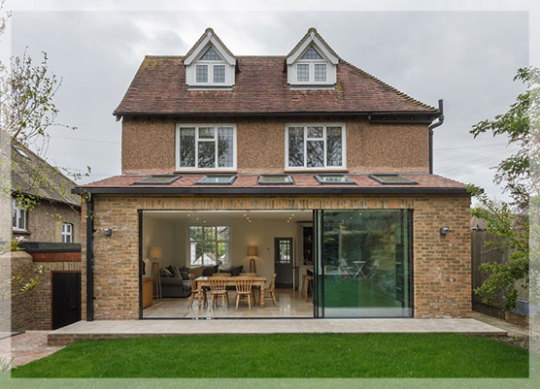
Transform your home and add value with a thoughtfully planned house extension in London. Trust us to create a stylish, functional, and personalized space that enhances your property's aesthetics and functionality.
0 notes
Text
Home Extensions Service in London
Welcome to Li Roofing, your premier destination for top-quality roofing solutions in London. While we specialize in providing great roofing services, we recognize that a well-rounded home repair job frequently entails more than simply the roof. That's why we're here to discuss an essential aspect of expanding and transforming your London home – home extensions. In this article, we'll explore the benefits of home extensions in London and how Li Roofing can assist you in creating the perfect home extensions london that blends seamlessly with your existing property.

Why Consider Home Extensions in London?
Space and Functionality: As one of the most vibrant and densely populated cities in the world, space comes at a premium in London. Home extensions offer an excellent opportunity to maximize your living area without the hassle and expense of moving.
Increased Property Value: Investing in a home extension can significantly increase the value of your London property. As the housing market in London remains competitive, an extension can make your home stand out among the rest.
Tailored Design: With the expertise of Li Roofing, you can achieve a seamless integration between your existing home and the extension, ensuring that the design complements your property's style, architecture, and aesthetics.
Why Choose Li Roofing for Your Home Extension Project?
Extensive Experience: With years of experience in the roofing industry, Li Roofing has expanded its expertise to include home extensions. Our team of skilled professionals possesses the necessary knowledge and craftsmanship to execute exceptional home extension projects that exceed your expectations.
Comprehensive Services: At Li Roofing, we offer comprehensive services for home extensions, ranging from initial consultation and design to construction and completion.
Quality Materials and Workmanship: We understand the importance of using only the highest quality materials for your home extension. That's why we source materials from reputable suppliers and employ skilled craftsmen who deliver impeccable workmanship. You can trust Li Roofing to build your home expansion to last, offering you with long-term satisfaction and peace of mind.
Conclusion: If you're considering expanding and enhancing your London home, a well-designed home extension can be the perfect solution. At Li Roofing, we are passionate about delivering exceptional roofing services and have extended our expertise to offer outstanding home extension solutions tailored to your needs. With our experience, comprehensive services, and commitment to quality, you can trust us to transform your living space into something truly extraordinary. Contact Li Roofing today to discuss your home extension project and embark on a journey towards a more spacious and functional London home.
#home extensions london#Home Extensions#Home Extensions near me#House Extensions#House extension builders
0 notes
Text
House, Property Extension Builders Wimbledon, Southwest London
Extending your home based in South West London? Denham Crescent builds a range of house extensions to increase the living space in your property. Our portfolio shows the best house extensions built all around South West London and London. For more details visit https://www.denhamcrescent.co.uk/house-extension

0 notes
Text
In this blog post, we’ll look at how Elite Quality Builder can help you make the most out of your house extension project.
0 notes
Text
THE HOLMWOOD FOUNDATION SEASON ONE SUPPORTING CAST
BASIL WAITE - THOMAS VAN HELSING


Basil is a puppeteer and puppet builder, who currently lives by the sea in rainy South Wales. He is well-versed in performing without being seen, as he’s usually under a table or behind a desk, so this project will be a lot more comfortable…! When he’s not making creatures from fleece or doing silly voices, he’s usually listening to an audio book or podcast, so he’s thrilled to be involved with this amazing project!”
MICHELLE KELLY - HENRI MARTIN


Michelle Kelly is an actor, voice actor and TTRPG performer based in Yorkshire, UK. You can hear her as Niyathi in The Secret of St Kilda, as Alexandria in Tales From the Fringes of Reality, and as multiple characters in The Silt Verses, Folxlore and Shadows at the Door. Find out more about her work at https://michellekellyperformance.carrd.co
JACKIE CALISTAHHH - ELENA


Jackie Calistahhh is an actress and seductress. She works in SFW and NSFW productions alike: Commercials, videogames, erotica. She loves immersing herself in different characters and worlds.
ROBYN HOLDAWAY - CAM


Robyn is a non-binary actor best known for their work as Layla in Netflix's 'Sex Education'. Their credits also include: AMC's 'Moonhaven', BBC's 'Strike: Lethal White', and various other stage and screen roles. Their audiobook work includes the award winning 'Our Wives Under the Sea', as well as critically acclaimed 'Sistersong', 'How To Understand Your Gender', and 'Skin'. Robyn can be heard in the audiodrama 'Camlann' and in the upcoming video game 'Eternal Strands'. They are an active member of the LGBTQ community, and they are passionate about bringing this diversity into the mainstream both as an artist and as an activist
DAVID AULT - DR TIMOTHY LAKE


David has played major roles for many productions, including his 'Best Actor' award-winning portrayal of Byron in The Byron Chronicles. He can also be heard at the No Sleep Podcast, Shadows at the Door and Colonial Radio Theatre, amongst others.
KARIM KRONFLI - DAVE


Karim has been a professional performer for over 30 years originally working as a juggler and firebreather. Trained as a Director and Voice Actor at City Lit in London he started doing voice work in 2010. Specialising in audio drama he has appeared in over 100 productions including Re: Dracula, The Magnus Archives, London After Midnight, SCP Archives, Dr Who: Redacted and many more.
CANDACE MCAFEE - MAGDALENA SWIFT


Candace the Magnificent (they/she) is an actor, TTRPG performer, and writer based in Fort Lauderdale, Florida. They love bringing their unique voice to a wide variety of projects, from commercials and animation to improv and audiodramas. You can hear more of their work in the upcoming video game Monaco 2, the cosmic horror audio drama Partial Veil, the actual play podcasts 3 Black Halflings and Frequencies, and many more. Learn more about her here: https://candacemcafee.carrd.co.
ANDREW BISS - JONATHAN HARKER 3RD


Andrew is an actor, voice actor and playwright, with an extensive background in theatre and film. Recent credits include the audio dramas ‘Station 151,’ ‘Vampire: The Masquerade Port Saga’ and the newly released ‘Clawmoor Heights’ as well as narrating the documentary series ‘Building Icons’ for Warner Bros. Discovery. He is the author of the best-selling book ‘Monologues They’ll Remember You By’ and is a graduate of the University of the Arts London and a member of the Dramatists Guild of America, Inc. More at: andrewbiss.com and adbvoiceover.com.
As always, you can listen to our pilot episode now for free at the link below. And please donate to our Kickstarter for Season One, if you're able!
#the holmwood foundation#the holmwood foundation podcast#Dracula#cast announcement#voice acting#horror#horror podcast#horror fiction podcast#tom van helsing#henri martin#Elena#Cam#Tim Lake#Dave#Magdalena Swift#Jonny 3#Basil Waite#Michelle Kelly#Jackie Calistahh#Robyn Holdaway#David Ault#Karim Kronfli#Candace Mcafee#Andrew Biss
36 notes
·
View notes
Text
A walk through Bengal's architecture
Bengali architecture has a long and rich history, fusing indigenous elements from the Indian subcontinent with influences from other areas of the world. Present-day Bengal architecture includes the nation of Bangladesh as well as the Indian states of West Bengal, Tripura, and Assam's Barak Valley. West Bengal’s architecture is an amalgamation of ancient urban architecture, religious architecture, rural vernacular architecture, colonial townhouses and country houses, and modern urban styles. Bengal architecture is the architecture of Wind, Water, and Clay. The Pala Empire (750–1120), which was founded in Bengal and was the final Buddhist imperial force on the Indian subcontinent, saw the apex of ancient Bengali architecture. The majority of donations went to Buddhist stupas, temples, and viharas. Southeast Asian and Tibetan architecture was influenced by Pala architecture. The Grand Vihara of Somapura, which is now a UNESCO World Heritage Site, was the most well-known structure erected by the Pala rulers.

The Grand Vihara of Somapura
According to historians, the builders of Angkor Wat in Cambodia may have taken inspiration from Somapura. Bengal architecture became known for its use of terracotta due to the scarcity of stone in the area. Clay from the Bengal Delta was used to make bricks.
The temple architecture has distinct features like the rich wall decoration, often known as the terracotta temples, which was one of the remarkable elements of Bengali temple architecture. The double-roofed architecture of thatched huts was replicated by Bengali temples. Square platforms were used to construct the temples. Burnt brick panels with figures in geometric patterns or substantial sculptural compositions served as the temples' adornment.

Dochala style
These served as models for many temples that were built in undivided Bengal. Construction materials used in ancient times included wood and bamboo. Bengal has alluvial soil, so there isn't a lot of stone there. The bricks that were utilized to build the architectural components were made from stone, wood, black salt, and granite. Bengal has two different types of temples: the Rekha type, which is smooth or ridged curvilinear, and the Bhadra form, which has horizontal tiers that gradually get smaller and is made up of the amalaka sila. Mughal architecture, including forts, havelis, gardens, caravanserais, hammams, and fountains, spread throughout the area during the Mughal era in Bengal. Mosques built by the Mughals in Bengal also took on a distinctive regional look. The two major centers of Mughal architecture were Dhaka and Murshidabad. The do-chala roof custom from North India was imitated by the Mughals.

Jorasako thakurbari
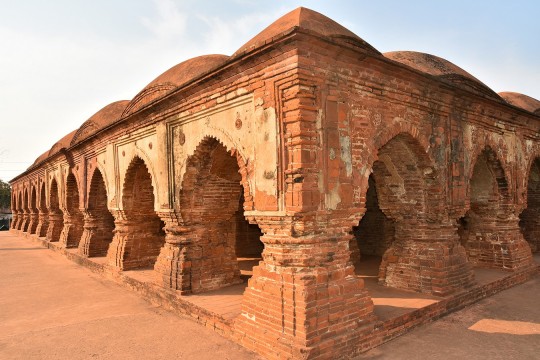
The Rasmancha is a heritage building located at Bishnupur, Bankura district, West Bengal.
Influence of the world on Bengal architecture: Although the Indo-Saracenic architectural style predominated in the area, Neo-Classical buildings from Europe were also present, particularly in or close to trading centers. While the majority of country estates had a stately country house, Calcutta, Dacca, Panam, and Chittagong all had extensive 19th and early 20th-century urban architecture that was equivalent to that of London, Sydney, or other British Empire towns. Calcutta experienced the onset of art deco in the 1930s. Indo-Saracenic architecture can be seen in Ahsan Manzil and Curzon Hall in Dhaka, Chittagong Court Building in Chittagong, and Hazarduari Palace in Murshidabad.
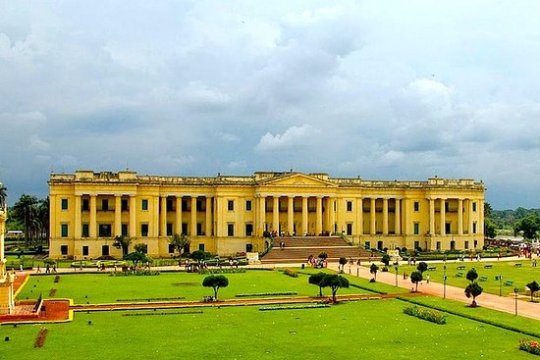
Hazarduari Palace in Murshidabad
The Victoria Memorial in Kolkata, designed by Vincent Esch also has Indo-Saracenic features, possibly inspired by the Taj Mahal. Additionally, Kolkata's bungalows, which are being demolished to make way for high-rise structures, have elements of art deco. The 1950s in Chittagong saw a continuation of Art Deco influences. The Bengali modernist movement, spearheaded by Muzharul Islam, was centered in East Pakistan. In the 1960s, many well-known international architects, such as Louis Kahn, Richard Neutra, Stanley Tigerman, Paul Rudolph, Robert Boughey, and Konstantinos Doxiadis, worked in the area.

The Jatiyo Sangshad Bhaban
This iconic piece of contemporary Bangladeshi architecture, was created by Louis Kahn. Midsized skyscrapers dominate the cityscapes of contemporary Bengali cities, which are frequently referred to as "concrete jungles." With well-known architects like Rafiq Azam, architecture services play a key role in the urban economies of the area. Overall Bengal architecture was influenced by various contemporaries of their time and continues to evolve.

Gothic architectural style seen in St. Paul's Cathedral in Kolkata.

Zamindar era buildings in ruin.

Belur Math in Howrah
#bengali#bangla#west bengal#bangladesh#tripura#assam#desi#বাংলা#india#architecture#tales#bengal architecture#history#kolkata#international#technology#information#temple#asia#bricks
192 notes
·
View notes
Text
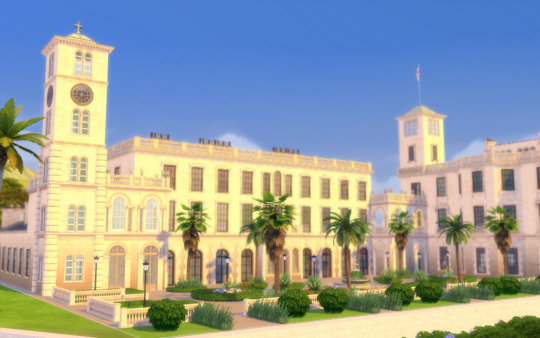
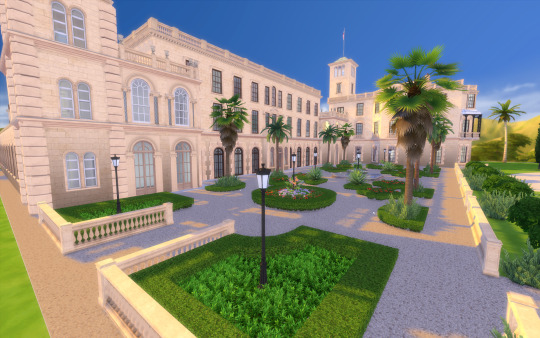
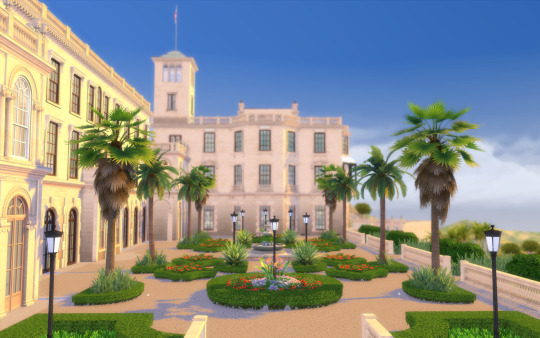

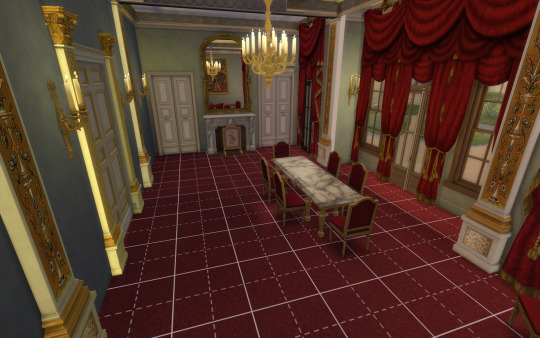
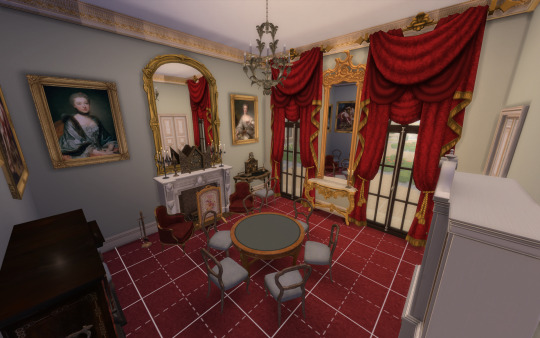
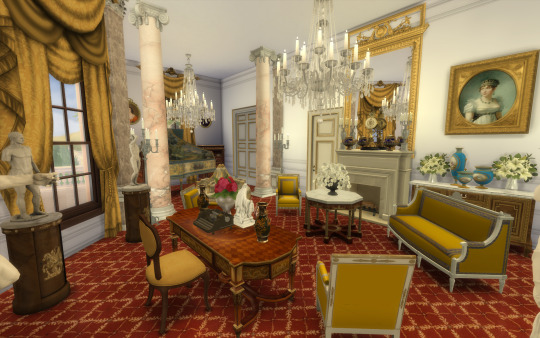
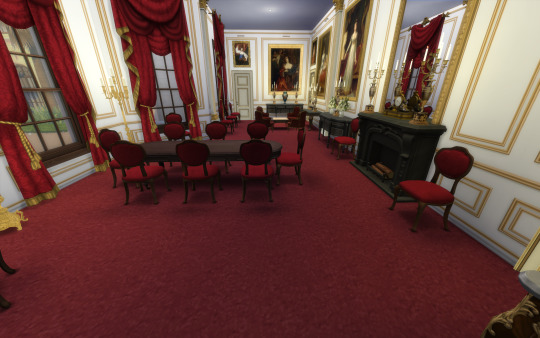
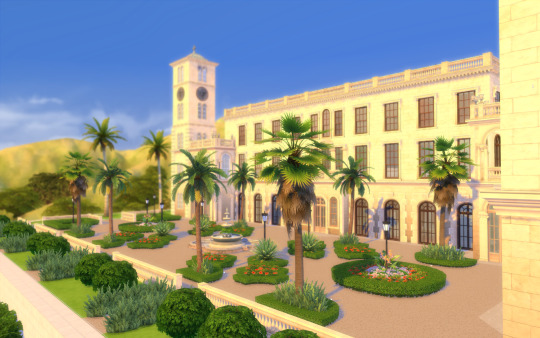
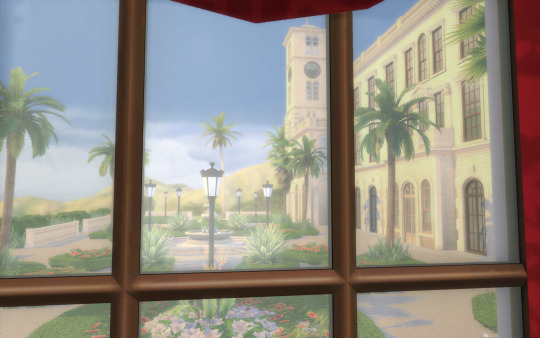
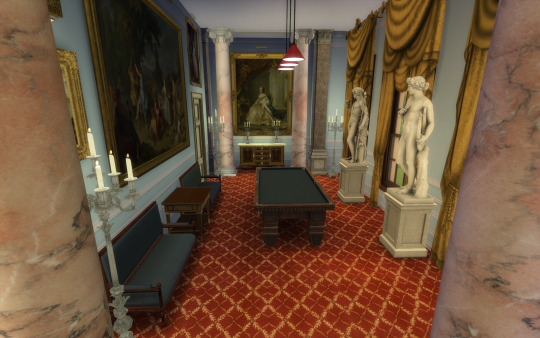
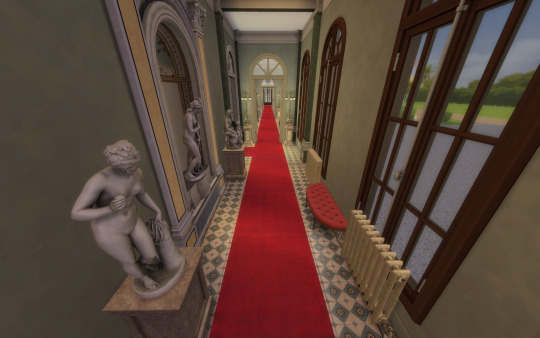
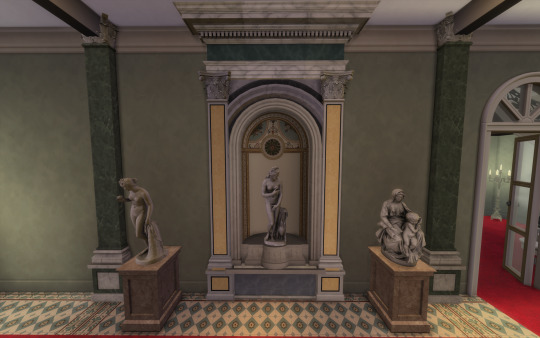
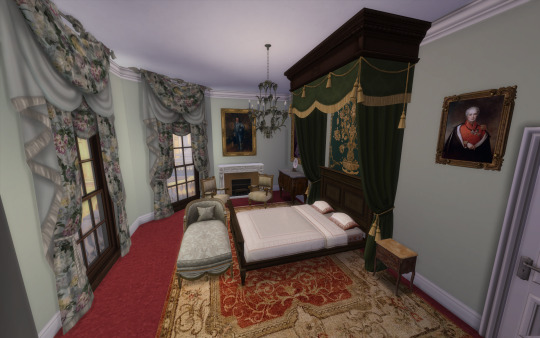
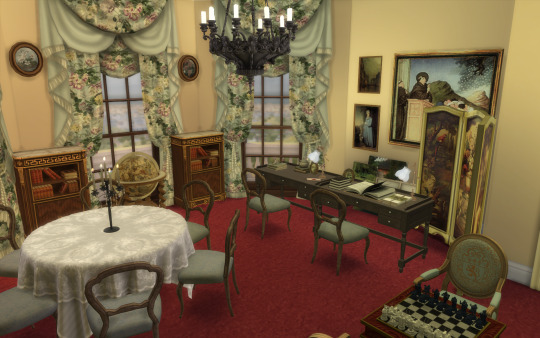
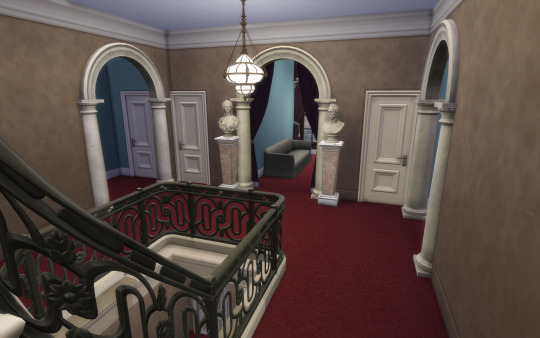
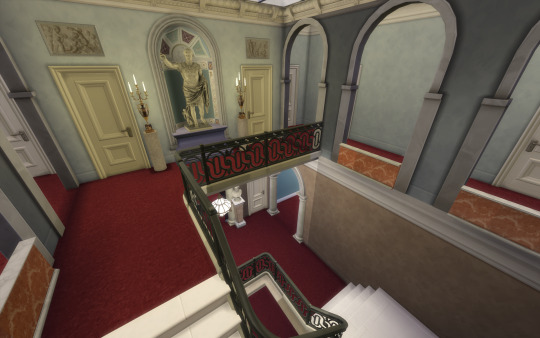

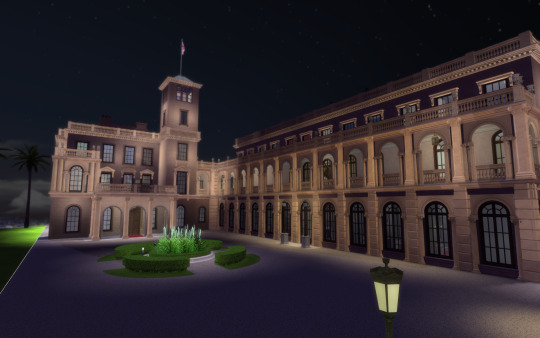

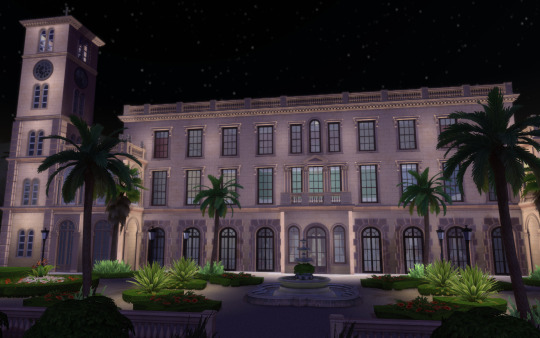
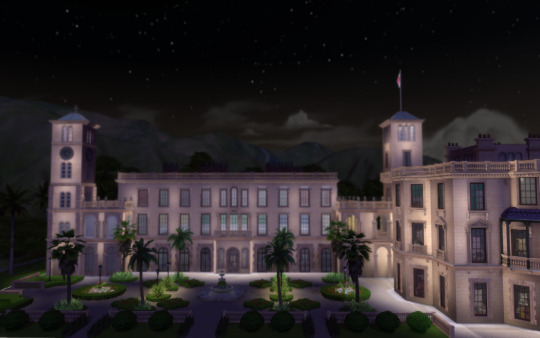
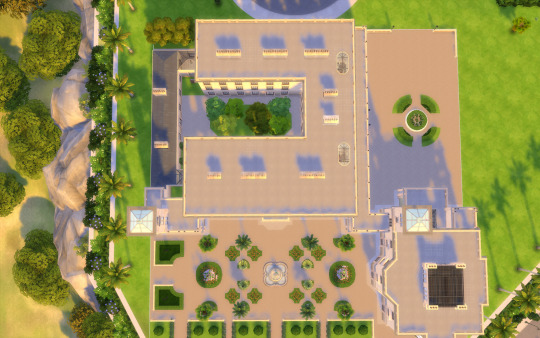

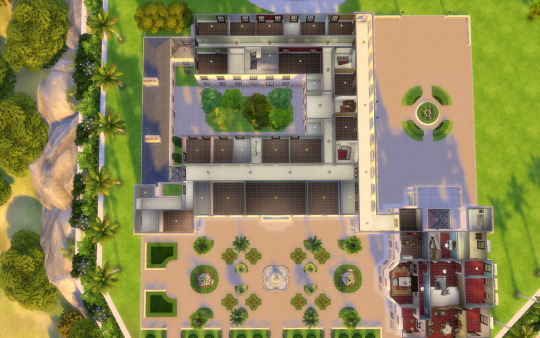
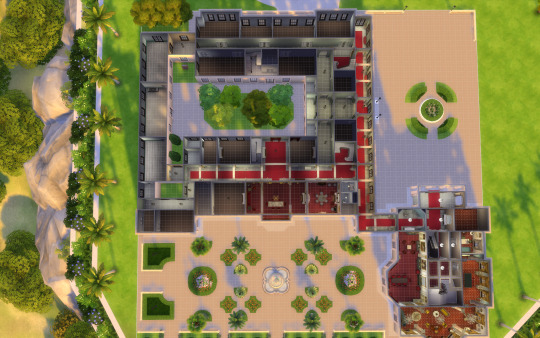
Osborne House
Hace un instante
Hi guys!!
I'm sharing Osborne House . This is the 11th building for my English Collection.
This was also a request from one of my patreons, so I hope it does not desapoint.
History of the house: In 1843 Queen Victoria and Prince Albert were looking for a seaside retreat for their growing family to escape the pressures of London and Windsor. The Osborne estate, then owned by Lady Isabella Blachford, was recommended to them by the Prime Minister, Sir Robert Peel (1788–1850).
The estate was initially leased, then bought in May 1845 for £28,000. As the existing house was too small, an extension was required. Queen Victoria and Prince Albert did not want to be restricted by the Department of Woods and Forests, which was then in charge of all government building, so Prince Albert bypassed the department’s architects. Instead he commissioned Thomas Cubitt (1788–1855), the master builder and developer of much of the Duke of Westminster’s Belgravia estate in London, to advise him.
Cubitt recommended that rather than alter the old house it would be best to build a new one, and proceeded to design it in collaboration with Prince Albert.
OSBORNE TAKES SHAPE
The first phase of building was completed in 1846 with the Pavilion, housing the private rooms of Queen Victoria and Prince Albert and the royal nurseries. The household wing, containing accommodation for members of the royal household who accompanied Queen Victoria to Osborne, was completed in 1848.
After the old house was demolished in 1848, the main wing, completed in 1851, was built on its site, and was linked by a long corridor to the household wing. The main wing was used initially by the royal children. The terraces on the north-east side of the Pavilion and main wing were designed to complement the house and are filled with the signature features of classical Italian gardens.
Neighbouring Barton Manor was thoroughly ‘restored’ by Cubitt and its outbuildings were organised as a model farm. Other building projects included estate cottages and lodges, a dormitory for male servants, and a landing house for the coastguard, with a sea wall along the coastal edge of the estate.
For more info: https://www.english-heritage.org.uk/visit/places/osborne/history-and-stories/history/#:~:text=Queen%20Victoria%20and%20Prince%20Albert,after%20Albert's%20death%20in%201861.
------------------------------------------------------------------------------
This house fits a 64x64 lot and was downsized to fit, so it lost some of its glamour.
It is not furnished except for the state rooms and some private bedrooms (for pictures and reference), as it was requested for that purpose.
Hope you like it.
You will need the usual CC I use:
all Felixandre cc
all The Jim,
SYB
Anachrosims
Regal Sims
King Falcon railing
The Golden Sanctuary
Cliffou
Dndr recolors
Harrie cc
Tuds
Lili's palace cc
Complete list of CC: https://docs.google.com/spreadsheets/d/1ybrxiDhssT3B_4My4KMjm0xNyMDkJ1kNafobQIEJLzQ/edit?usp=sharing
Please enjoy, comment if you like it and share pictures with me if you use my creations!
Early access (public release Sept-30)
Download: https://www.patreon.com/posts/105201540
#sims 4 architecture#sims 4 build#sims4#sims 4 screenshots#sims4play#sims 4 historical#sims4building#sims4palace#sims 4 royalty#ts4#ts4 download#ts4 simblr#ts4 gameplay#ts4 legacy#ts4cc#the sims 4#the sims community#simblr#sims 4#the sims#sims
42 notes
·
View notes
Text

Choose Quality House extensions in London-Elite Constructions London
Choose Quality house extensions in London by Elite Constructions London. We specialize in creating stunning and functional home extensions tailored to your unique needs. Our expert team handles every aspect of the process, from design and planning to construction and finishing touches. We prioritize quality, efficiency, and customer satisfaction. Whether you need a single-story or two-story extension, we have the expertise to deliver exceptional results. Contact home extension builders today to discuss your project and receive a personalized quote.
#elite construction limited#best small local builders near me#cheap small local builders near me#construction#elite construction near me#home interior#interior decorating#interior design#interiorinspiration#london#house exterior#house extensions#home extension#home exterior#London#United Kingdom
0 notes
Photo

Diversity in Church Architecture in Medieval England
Medieval English churches differed in size and layout. Their original and evolving role(s), financial and material resources, and architectural fashions helped determine variability. However, their look ultimately grew from a constant symbiosis between being a place for worship and practical matters. During the 10th-15th centuries, stone construction became firmly established, and that witnessed a golden era of church building.
Purpose & Resources
Immediate, mundane reasons for diversity were just as for any other buildings – houses, castles, offices – it depended on the purpose for which they were originally built and the financial and material resources available to the initial builders and to later owners who wanted to extend and/or beautify it.
Impoverished communities created basic churches employing the means and materials members of the settlement possessed or could source nearby using their own sweat and skills. Rich sponsors had the wherewithal to envisage and execute the most lavish projects money and authority could buy, transporting materials from far and wide, engaging the leading designers, technology, masons, metalworkers, carpenters, painters, and glaziers of the day.
Basic buildings might be erected as outposts of mother churches/minsters or by individual villages or minor landowners wanting a place, however humble, to express their faith, as a centre for the daily, weekly, and yearly cycles of devotion that dominated and led peoples' lives. They were simple rectangular structures, large enough for maybe 15 to 20 worshippers. The grandest undertakings were sponsored by major royal, aristocratic, or religious order benefactors to produce leading centres of ecclesiastical, administrative, and scholarly influence. Many of the great cathedrals, abbeys, and minsters, like Durham, Lincoln, and Old St Paul's London were wonders of the world at the time they were built, well over 100 meters long, 100 meters high, or more, and tens of meters wide.
Of course, the majority of churches fell in between these extremes. Some might not initially have been conceived on a grand scale, yet over the centuries they grew as patrons and communities responded to changing population sizes and advances in building technology that fed the desire to always have the bigger, better, more beautiful, the latest architectural fashion. In the economic climate of the later Middle Ages, fresh sponsors of church building and extension entered the scene. Newly rich guilds and merchants in many towns employed their wealth to craft ornate chapels or enhance an existing church with which they were associated. From unpretentious origins, many modest buildings thus grew into impressive houses of God – witness Leicestershire's grandest church in Melton Mowbray backed by wool traders' money, and the great wool churches of Norfolk and Suffolk.
Continue reading...
30 notes
·
View notes
Text
The Sun in summer 2022:
The Cambridges' new pad Adelaide Cottage needs no extra taxpayer-funded security or costly refurb. It's understood the family will have no live-in staff, with any aides commuting to Windsor instead. And sources say they dream of a "modest" home with a garden so the children can play outside together. One insider told The Sun: “They were adamant they didn’t want anything too showy or anything that needed renovating or extra security so as not to be a burden on the taxpayer." The property was modernised back in 2015.
The Daily Mail in June 2022:
Prince William and Kate Middleton will move their family into a four-bedroomed home on the Windsor estate this summer. The Duke and Duchess of Cambridge, are reportedly set to uproot their family from Kensington, west London, to Adelaide Cottage in Berkshire in order to be closer to the Queen. Re-erected in 1831, the Cambridge’s new Grade II-listed retreat is just a short walk from St George’s Chapel and Windsor Castle, and sits proudly on the 655-acre royal estate in Berkshire.
Victoria Ward for The Telegraph on 14 August 2022:
But in the coming two or three weeks, the Duke and Duchess of Cambridge will do the opposite, swapping their grand Kensington Palace home for a relatively modest four-bedroomed cottage on the Windsor estate, a move that will see them navigate life without a live-in nanny for their first time in their children’s lives. [...] Although Ms Borrallo will be kept on full time, she will live elsewhere, as will the handful of other support staff that have long “lived-in” with the family at Kensington Palace, thought to include a housekeeper and a chef.
The Sun on 03 September 2022:
“They had to have moved in this weekend, because the children have to start at their new school next week. “The renovation is no-frills, by royal standards — and is certainly in stark contrast to the £2.4million work Harry and Meghan had done on Frogmore Cottage. It will have been a builder’s finish.” Kate and William spent around a year searching for a home in Windsor so the children could go to school together. They settled on Adelaide Cottage, as first revealed by The Sun, because they believed it needed no major renovations. They decided to go with existing furniture and fittings but had a fresh coat of paint to make it feel like home for the children.
LESS THAN TWO YEARS LATER...
The Mirror on 15 April 2024:
Prince William and Kate Middleton are reportedly hatching surprise plans to transform a secret home into something of a sanctuary as part of the Princess's recovery process. The Royal couple is said to be contemplating renovations and extensions to a little-known redbrick annexe adjacent to their Adelaide Cottage residence in Windsor. The family, who relocated to the Berkshire estate towards the end of summer 2022, currently divide their time between the four-bedroom cottage and their cherished Anmer Hall retreat on the Sandringham Estate. While Adelaide Cottage offers an ideal location due to its closeness to Lambrook School where Prince George, Princess Charlotte and Prince Louis attend, insiders suggest the family are considering plans to expand a currently vacant annexe to assist in the princess' recuperation. However, this decision is not without its challenges, as sources indicate that the Prince of Wales is "conscious of public scrutiny" regarding Royal expenditure and is taking a cautious approach to personally funding the costs. "They [William and Kate] absolutely adore Adelaide Cottage, but it just about fits the entire family, whereas Anmer Hall is much larger with extensive grounds," the source revealed to OK!. "Adelaide Cottage is being used as a term time property while the children are at school nearby and Anmer Hall is for long weekends and holidays." Insiders have spilled the beans on plans to revamp a run-down redbrick annexe at Adelaide Cottage, aiming to turn it into a perfect retreat for the Wales family and their aides. While the project is on pause as the Princess of Wales focuses on her recovery, the plans are reportedly simmering away in the background, ready to spring into action when the time is ripe. "Nobody knows that there is quite a spacious red-brick annexe building that's not being used next door to Adelaide Cottage," an insider said. "It's currently inhabitable and needs extensive renovation works if it were to be used. Discussions have been ongoing for a while about using the property as part of the overall cottage grounds, but it's just about finding the right time to kick the project off." The need for space is more than a luxury; sources say it's vital for Kate's path to wellness, providing her with a serene environment to manage her treatment's demands. Anmer Hall is the top pick at the moment, thanks to its generous size and seclusion. Mindful of past backlash over public funding, the Wales clan is considering footing the bill for the Adelaide Cottage annexe's refurbishments themselves. "William is very conscious of the public scrutiny over the Royal Family's spending habits, so he is looking at the best way to cover any renovation costs," a source revealed. "It's a project that's very much been put on the back burner for now due to the family's unfortunate position, but it will be looked at again when the time is right." Adelaide Cottage, tucked away in the Crown Estate's private 655-acre Royal park, was originally constructed in 1831 as a sanctuary for the wife of King William IV, Queen Adelaide. The cottage underwent significant refurbishments in 2015 and boasts some seriously opulent decor. It's said that the master bedroom's ceiling is adorned with gilded dolphins and rope ornamentation, according to various reports.
Well, well, well...
Adelaide Cottage "just about fits the entire family."
"Just about" but not quite, apparently.
Is four bedrooms no longer enough? It was perfectly fine two years ago when they selected it as it "needed no major renovations."
But Kate needs this annex renovation completed for her "path to wellness"? I've never heard of a person undergoing "preventative chemotherapy" needing extensive renovations to their personal real estate to improve their health, particularly when they already have above average living space.
There is a time limit to "preventative chemotherapy." She shouldn't need to be doing "preventative chemotherapy" forever. If she's just doing "preventative chemotherapy," then she should be able to recover within a few weeks after she completes "preventative chemotherapy." (Unless she's really not doing "preventative chemotherapy" to begin with...)
But, hey, if she needs more "space" at home for non-"luxury" reasons, then The Mirror is supporting my previous statement that Kate "is going to be more reclusive for the next year or two."

#fleet street#Matt Wilkinson#Victoria Ward#the telegraph#daily mail#the daily mirror#well well well#Windsor Great Park#real estate#Windsor Castle#Adelaide Cottage#pr games#strategery#kensington palace#palace household#palace staff#kate middleton#Catherine The Princess of Wales#William The Prince of OWN GOALS#William The Terrible#William The Weak#prince william#William The Prince of Wales#Prince & Princess OWN GOALS#Wales fandom ARMAGEDDON#my gif
7 notes
·
View notes
Text
Inside Josh Widdicombe’s home with butcher shop tiles and a £6,000 bath (The Sunday Times, 10.11.24)

The comedian’s interior designer wife, Rose Hanson, has restored an 1860s house with copper pipes, vintage finds and lots of books.
[NON-PAYWALL / ORIGINAL]
The comedian Josh Widdicombe and Rose Hanson, his interior designer wife, have restored a 19th-century former artist’s house in the village of Mullion, on the Lizard. The star of Channel 4’s The Last Leg is in the process of writing gags for his 2025 stand-up tour. Called Not My Cup of Tea, because he gave up alcohol last year and now drinks eight cups of “builder’s tea” a day, the show will be a catalogue of gentle gripes on topics from motorway services to children’s party bags. He says inspiration strikes during the eight-hour drive from where they live in Hackney, east London, to their Cornish home, when he has the captive audience of Hanson and their kids, Pearl, seven, and Cassius, three. Traffic jams on the A303 are evidently fertile ground for middle-aged grumbles.

We are speaking during half-term, and the final stage of the renovation — the landscaping of their three-quarter-acre plot — is in ear-splitting full swing. A sauna has already been installed and by the time the diggers depart there will be a fireplace and outdoor kitchen on the patio, and a natural swimming pool in the garden. To a backing track of excavations, the couple, both 41, explain that they picked this glorious spot because Josh grew up in Haytor Vale, near Torquay, and his parents still live nearby in Devon, while Hanson (whose mother, incidentally, helped to create Zippy, the puppet from the 1980s kids’ show Rainbow) remembers Cornwall fondly from childhood holidays. “It felt like a natural place for us to look,” she says.
The 1860s house, called Moorlands, previously belonged to a local abstract artist, Barrie Cook, whose works are in the Tate and the Government Art Collection. “He’s got Wikipedia. So he’s legit,” Widdicombe says. “I don’t know much about art but if someone’s got a Wikipedia page, that’s quite a big deal.” Along with the rambling building, they took on the expectations of Cook’s family. “We had quite a strange day of meeting the whole extended family after we’d bought the house,” Widdicombe says. “They just wanted to know that this place was going into the hands of people that would care about it and treat it well.” The couple have done the Cooks proud, with a sympathetic top-to-toe restoration and a reconfiguration of the layout to meet the demands of modern family life.

They bought Moorlands in October 2022 for under £850,000 and are likely to spend the same again on renovations. Work started in January 2023, knocking through walls upstairs and between the sitting room and dining room on the ground floor. Six months later, the old extension was demolished and by November every single window in the house had been replaced. “They’re basically identical to the windows that were here, but they’re not falling apart,” Hanson says. They took the property from five bedrooms and two bathrooms to six bedrooms and seven bathrooms, overhauled the electrics, got rid of the oil tank and replumbed with help from a local company called The Braze. “It’s like an incredible work of art with all of these amazing copper pipes,” she says.

By March this year the lights and heating were on. Hanson sourced the oak flooring from Dartmoor firm Coppice and Crown. The most striking change was the replacement of the old sunroom on the first floor. “The upstairs conservatory was quite amazing. But it was just completely impractical because it was absolutely boiling, and there was quite bad damp in the room below. So we got an architect involved and designed two double bedrooms with en suites, and a beautiful formal dining room underneath.” Hanson repositioned the kitchen at the front of the house, where the family would benefit from the glorious garden view. By April 24, every room in the house was finished, and they had their first guests to stay.
Now they intend to spend six weeks of the year enjoying their seaside getaway, and let it out in between family visits. So how do they live when in Cornwall? Hanson lifts weights in her home gym and plans to learn to surf at the nearby Dan Joel Surf School. “I hate stuff like that,” says Widdicombe, who can’t swim. “I like a walk. I like running on the treadmill, but I don’t like anything that takes me outside of my comfort zone, ideally. The reason to be on holiday is to relax, not to do anything that makes me stressed.”

He doesn’t mean to party, either. It’s a part of the world notorious for celeb spotting, with notable locals including fellow comics David Baddiel and Morwenna Banks, but the couple plan to lead a quiet life. “We don’t really have parties because we’ve got young children,” Hanson says. “And the people who come and stay have young children too. I mean, we’re lucky if we all get downstairs again after the kids’ bedtime at nine o’clock.” The wildest evening at Moorlands so far was, Widdicombe says, “The first week we stayed, we had four couples and eight children in the house, and we managed to get six kids in the bath at once.”

The tub in question, in the family bathroom, is a £6,000 Rockwell, from Water Monopoly, which Hanson describes as “an extravagant purchase”. A magpie who is constantly acquiring vintage treasures, she added inexpensive second-hand touches to complete the decor. “We found this amazing little yellow bathroom cabinet that just kind of makes the whole room pop. I’m a real hoarder of second-hand fabrics from eBay and I’d got this vintage Pierre Frey fabric patterned with tassels and gems, which we made into a blind.”
Asked how much of the design is her husband’s idea, Hanson is quite clear. “He doesn’t have any say. I don’t even run anything past him, except budget. There are times where there are things that he would really like. When we moved into our first house, Josh really wanted a bread bin that said ‘Bread’ on it. So I made that happen. Then there was [a request for] a hot water tap. So fine. Yeah, you can have your hot water tap.”

Widdicombe has no complaints. “I’d rather someone else who knows what they’re doing takes the lead,” he says. “I know what I’m good at and I don’t think Rose is ever going to give me notes on my stand-up. And in the same way, I’m not going to give her notes on this.” Hanson responds: “You’re basically the dream client.”
Before they moved in together, the comedian’s taste was based around displaying his music collection. “I lived in a rental property in Turnpike Lane [north London] when I was in my twenties and I didn’t have much money. I had a wall of about 600 CDs.” Now his focus has switched to books as decor. “I buy a lot of books and I’m a keeper of books. I hate it when someone says to me, ‘Can I borrow that after you’ve finished reading it?’ Because I think, ‘No, I want to put it on my wall.’ It’s like you’ve killed a deer or whatever, isn’t it, and you want to display it? If someone says that, I’ll buy them a copy of that book rather than give them my book.” So, excluding the library in his study, and keeping her hands off the hot tap and bread bin, Hanson had carte blanche to decorate the house to her taste.
She brought in her friend Charlotte Tilbury, a designer who had worked on their London home in Victoria Park, Hackney, and moved to Devon during Covid. Halfway through the works, the two women decided to start a business together and make Moorlands their first joint project: Penrose Tilbury was founded. “It’s not like work,” Hanson says. “It’s like going and hanging out with your mate and drinking rosé.” It wasn’t all wine and design chat, she corrects herself. “The hardest things to find were bathroom tiles. We did a collaboration with Original Style who made a bespoke pencil-black tile for us that we just couldn’t really find anywhere. Then the Daily Mail did a story — they must have got some pictures from our Instagram — and somebody said in the comments that our bathrooms look like a butcher’s shop. I was quite pleased with that. That was sort of the look I was going for.”
The next visit will be for New Year’s Eve, when the couple will be inviting friends for an ultra-low-key gathering. Hanson says: “We might have a glass of wine after we finish bedtime at nine o’clock.” And there will be plenty of PG Tips.
2 notes
·
View notes
Text
New ground floor conservatory extension with new kitchen installation | Denham Crescent Ltd
New ground floor conservatory extension with the new kitchen installation and complete house refurbishment. New concrete floors with the screeding for tiling, new kitchen installation with quartz work top. Install new conservatory roof with new french doors. For more details visit https://www.denhamcrescent.co.uk/project/details/new-ground-floor-conservatory-extension-with-new-kitchen-installation_5

0 notes